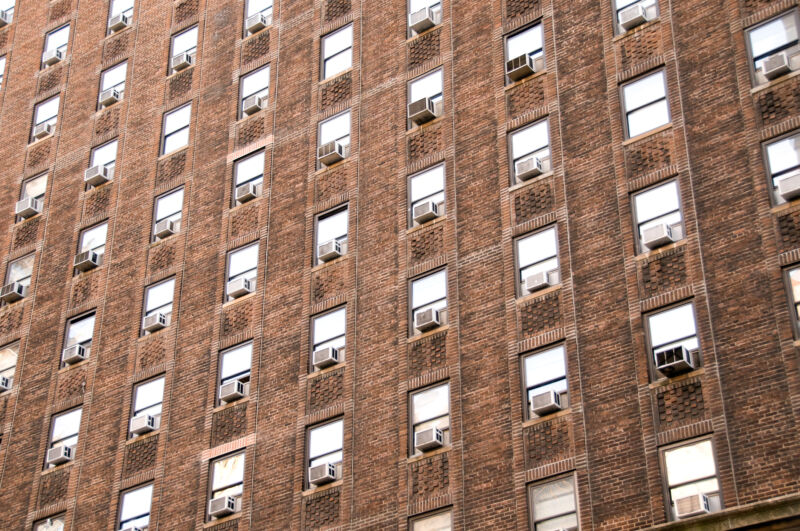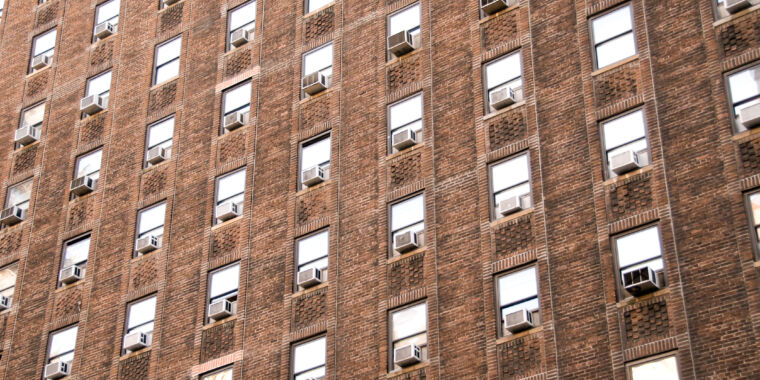
Jupiter Images | Getty
It was a monumental day for the environmental movement more than 30 years ago when all 198 countries in the world agreed on something for the first and only time ever. They signed on to the Montreal Protocol, making a pact to phase out a roster of chemicals that damage the Earth’s ozone layer. Chief among these were the chlorofluorocarbons (CFCs) and hydrochlorofluorocarbons used by the cooling and refrigeration industry. Alternatives, such as hydrofluorocarbons (HFCs), were quickly found.
But in recent years, scientists have come to realize that the Montreal Protocol of 1987 might have traded an immediate problem for a long-term one. Though HFCs don’t cause the same damage to the ozone layer as CFCs do, the chemicals have warming potentials hundreds to thousands of times higher than that of CO2—making their growing global use a cause for concern.
The 20th-century industrial revolution saw a major boom in the air-conditioning and refrigeration industry in Europe and North America. Now, as developing nations boost their economies, countries such as China, India, and Nigeria are seeing skyrocketing demand for these appliances.
About 3.6 billion cooling appliances—for cooling buildings and refrigerating food and other items such as medicines—are in use today, according to a 2020 report by the United Nations Environment Program; the number is expected to leap to 9.5 billion by 2050. What’s more, that figure would be a staggering 14 billion if everyone who needed cooling services could acquire them, according to one estimate.
Knowable Magazine spoke with Shelie Miller, an environmental engineer at the School for Environment and Sustainability at the University of Michigan. Miller coauthored an article in the 2021 Annual Review of Environment and Resources that examined the rising global demand for cooling and refrigeration, its effects on greenhouse gas emissions, and potential solutions. This conversation has been edited for length and clarity.
This may sound like an odd topic for a lot of people. Why should we be concerned about the cooling and refrigeration industry?
When people think about environmental impacts that need to be tackled, it’s very rare that people think about cooling services. But it is an incredibly important issue that isn’t really being addressed. “Cooling service” is a very broad category that refers to temperature-controlled environments. And it intersects the building, transportation, and food sectors. It has a tremendous impact when you start looking at overall global energy use and greenhouse gas emissions.
And the industry is set to see exponential growth in developing countries. So it’s important that we realize the industry’s overall impact.
How does the cooling and refrigeration industry affect the environment?
Cooling an environment, whether it is a household refrigerator or an air conditioner, requires a tremendous amount of energy. Because our electricity grids rely heavily on fossil fuels, any energy use that goes to reducing temperature also emits greenhouse gases. So much of the environmental impact is simply the consumption of an incredible amount of energy, largely based on fossil fuels.
Also, when we talk about the technology of cooling spaces, it requires something called refrigerants. Refrigerants are chemicals that are used to reduce temperatures and conventional refrigerants often have high global warming potential.
So even though we’re using a relatively small amount of refrigerants, the impact of refrigerants when they leak out into the atmosphere ends up having a major impact on climate.
We once used refrigerants like CFCs that had a devastating impact on the ozone layer. So we banned them and introduced new chemicals. Did we only trade problems here?
One of the great environmental successes is the ban of certain chemicals that are ozone-depleting. As you mentioned, one of the major environmental conventions, the Montreal Protocol, banned the use of ozone-depleting chemicals in the refrigerant industry. As replacements, we came up with hydrofluorocarbons, or HFCs. And that did a great and effective job of reducing ozone depletion, but at the cost of warming.
So we traded off ozone depletion potential for high greenhouse gas emissions. In another international agreement called the Kigali Amendment, nations are trying to tackle the greenhouse gas emission-associated problems with refrigerants. So we are now trying to have alternative refrigerants that also have a lower global warming potential.








